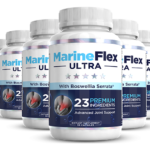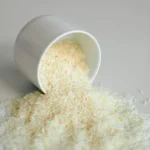If you find yourself struggling with weight-related joint pain and mobility issues, don’t worry, you’re not alone. Many people face these challenges, but there are steps you can take to manage and alleviate the discomfort. This article will provide you with practical tips and strategies to help you effectively manage your weight-related joint pain, allowing you to regain your mobility and enjoy a pain-free life. So, let’s dive into these helpful tips that can make a world of difference for you.
In This Article
Toggle1. Maintain a Healthy Weight
Calculate your body mass index (BMI)
Being overweight or obese can put additional stress on your joints, worsening joint pain and making it harder to move. Calculating your BMI is a helpful tool in determining if your weight is within a healthy range for your height. BMI takes into account both your weight and height, providing an estimate of body fat percentage. There are numerous online calculators that can help you easily determine your BMI.
Set realistic weight loss goals
If your BMI is in the overweight or obese range, it’s important to set realistic weight loss goals. Losing just a few pounds can significantly reduce the load on your joints, providing relief and improved mobility. Aim to lose around 1-2 pounds per week, as this is a safe and sustainable rate of weight loss.
Adopt a balanced and nutritious diet
Adopting a balanced and nutritious diet is essential for maintaining a healthy weight and managing weight-related joint pain. Focus on consuming a variety of fruits, vegetables, whole grains, lean proteins, and healthy fats. Avoid or limit foods that are high in added sugars, unhealthy fats, and processed ingredients. Consulting a registered dietitian or nutritionist can help you create a personalized meal plan that meets your specific needs.
Monitor portion sizes
Controlling portion sizes is key to managing your weight and reducing joint pain. Be mindful of the amount of food you consume and try to avoid oversized portions. Consider using smaller plates and bowls to trick your brain into thinking you’re eating more. Listen to your body’s hunger and fullness cues, and stop eating when you’re satisfied, not overly stuffed.
Engage in regular physical activity
Regular physical activity is crucial for maintaining a healthy weight and improving joint health. Aim for at least 150 minutes of moderate-intensity aerobic exercise or 75 minutes of vigorous-intensity exercise each week. Find activities that you enjoy and that are gentle on your joints, such as walking, swimming, cycling, or low-impact aerobics. Always consult with your healthcare provider before starting an exercise program, especially if you have any underlying health conditions.
2. Incorporate Low-Impact Exercises
Choose exercises that reduce stress on joints
When dealing with joint pain, it’s important to choose exercises that reduce stress on your joints. Low-impact exercises are ideal as they put less pressure on your joints compared to high-impact exercises like running or jumping. Walking, stationary cycling, and using an elliptical machine are great examples of low-impact exercises that can help improve your cardiovascular health without putting excessive strain on your joints.
Consider swimming or water aerobics
Swimming and water aerobics are excellent low-impact exercises that offer buoyancy and support, taking the pressure off your joints. The water provides natural resistance that helps strengthen muscles without putting excessive strain on your joints. Consider joining a local swimming or aqua fitness class to incorporate these activities into your exercise routine.
Try cycling or using an elliptical machine
Cycling, whether outdoors or on a stationary bike, is another low-impact exercise that can benefit your joint health. It helps strengthen the muscles around your knees and hips while minimizing the impact on your joints. Using an elliptical machine is also a great option as it mimics the motion of walking or running without the jarring impact. It provides a cardiovascular workout while being gentle on your joints.
Include stretching and flexibility exercises
Stretching and flexibility exercises are essential for maintaining joint mobility and preventing stiffness. Incorporate gentle stretches into your routine to improve flexibility and relieve tension in your joints. Yoga and tai chi are excellent practices that combine stretching, strengthening, and balance exercises to promote joint health and overall well-being.

This image is property of images.pexels.com.
3. Strengthen Muscles Around the Joints
Consult with a physical therapist
Working with a physical therapist can be highly beneficial when it comes to strengthening the muscles around your joints. A physical therapist can assess your specific needs and create an individualized exercise program that targets the areas most affected by joint pain. They can guide you through proper form and technique, ensuring you perform exercises safely and effectively.
Focus on exercises for specific joints
To strengthen the muscles around your joints, it’s important to focus on exercises that target those specific areas. For example, if you experience knee pain, exercises like leg extensions, squats, and lunges can help strengthen the muscles around your knee joint. Speak with your physical therapist or healthcare provider to determine which exercises are most suitable for your condition.
Gradually increase resistance and repetitions
To maximize the benefits of muscle strengthening exercises, it’s important to gradually increase the level of resistance and repetitions. This progressive overload helps build strength and endurance in the muscles surrounding your joints. Start with lighter weights or resistance bands and slowly increase as you become more comfortable and stronger. Remember to always listen to your body and avoid pushing yourself too hard to prevent injury.
Consider using resistance bands or weights
Resistance bands and weights are effective tools for strengthening the muscles around your joints. They provide resistance and challenge your muscles, helping to improve stability and reduce joint pain. When using resistance bands, start with lighter resistance and gradually increase as your muscles become stronger. If using weights, opt for low weights and focus on proper form and control to avoid unnecessary strain on your joints.
4. Use Assistive Devices
Discuss with a healthcare professional or physical therapist
If joint pain significantly impacts your mobility and daily activities, it may be beneficial to discuss the use of assistive devices with a healthcare professional or physical therapist. They can provide expert guidance on the most appropriate devices for your specific needs and how to properly use them. Assistive devices can offer support and stability, reducing the stress on your joints and helping you move more comfortably.
Utilize braces or supports for affected joints
Braces or supports can provide stability and reduce pain in affected joints. They can help redistribute forces and relieve pressure, allowing for improved joint alignment and function. Whether it’s a knee brace, wrist support, or ankle brace, these devices can provide additional support and protection, promoting better joint health and minimizing discomfort.
Consider using canes or walkers for stability
If joint pain affects your balance or stability, canes or walkers can be helpful in providing additional support. These assistive devices distribute weight away from affected joints, reducing the load and improving your ability to walk. Consult with a healthcare professional to determine which type of cane or walker is most suitable for your needs.
Use specialized shoe inserts or orthotics
Specialized shoe inserts or orthotics can help improve joint alignment, reduce pain, and provide additional support. They can help distribute pressure evenly across your feet, ankles, and knees, reducing strain on your joints. Properly fitted orthotics can also help correct any abnormalities in your foot structure or walking gait, mitigating joint stress and enhancing overall comfort.

This image is property of images.pexels.com.
5. Practice Good Posture
Maintain a neutral spine alignment
Maintaining a neutral spine alignment is essential for good posture and joint health. When standing, align your head, neck, and spine in a straight line, avoiding slouching or excessive arching. When sitting, keep your back straight and supported, using a chair with proper lumbar support if needed. Practicing proper alignment helps distribute forces more evenly throughout your body, reducing the strain on your joints.
Sit and stand with proper support
When sitting and standing, ensure you have proper support to maintain good posture and reduce joint pain. Use chairs with adequate back support and cushions if necessary. When standing for extended periods, consider using a footrest or an anti-fatigue mat to reduce the impact on your joints. Taking frequent breaks to change positions and stretch can also help alleviate joint discomfort.
Use ergonomic furniture and accessories
Investing in ergonomic furniture and accessories can significantly improve your posture and alleviate joint pain. Consider using an ergonomic chair that supports your lower back and promotes proper alignment. Use a keyboard and mouse that are at the appropriate height and angle, allowing your wrists to remain in a neutral position. Ergonomic pillows and cushions can also provide additional support and comfort.
Engage in exercises to improve posture
Engaging in exercises specifically designed to improve posture can help strengthen the muscles that support your joints and promote better alignment. Pilates, yoga, and exercises that target your core muscles are particularly effective in improving posture and reducing joint pain. Consult with a certified instructor or physical therapist to learn proper techniques and exercises that are suitable for your condition.
6. Apply Heat or Cold Therapy
Use heat to relax muscles and increase blood flow
Heat therapy can be highly beneficial in relieving joint pain and stiffness. Applying a warm compress, taking a warm bath or shower, or using heating pads can help relax muscles, improve blood flow, and reduce discomfort. Heat therapy can be particularly effective before engaging in physical activity or performing stretching exercises to prepare the joints and muscles for movement.
Apply ice or cold packs to reduce inflammation
Cold therapy, such as applying ice packs or using cold compresses, can help reduce inflammation and numb pain in affected joints. Cold restricts blood flow, which can help decrease swelling and relieve discomfort. Ice therapy is especially useful after physical activity or when experiencing acute pain. Remember to always wrap ice or cold packs in a towel or cloth to protect your skin from frostbite.
Alternate between heat and cold therapy
Some individuals find alternating between heat and cold therapy beneficial in managing joint pain and inflammation. This technique, known as contrast therapy, involves applying heat for 15-20 minutes, followed by cold therapy for 10-15 minutes. The contrast between hot and cold temperatures can help improve blood circulation and reduce inflammation, providing relief and promoting healing.
Follow appropriate guidelines for duration and frequency
When using heat or cold therapy, it’s important to follow appropriate guidelines regarding duration and frequency. Generally, heat therapy can be applied for up to 20 minutes at a time, while cold therapy sessions should not exceed 15-20 minutes. It’s crucial to listen to your body and discontinue therapy if it becomes uncomfortable or causes any adverse effects. If you have any underlying health conditions or concerns, consult with a healthcare professional before using heat or cold therapy.

This image is property of images.pexels.com.
7. Seek Professional Treatment
Consult with a healthcare provider or orthopedic specialist
If your joint pain persists or worsens despite self-management efforts, it’s important to consult with a healthcare provider or orthopedic specialist. They can evaluate your condition, order necessary diagnostic tests, and provide targeted treatment recommendations based on your specific needs. Prompt medical attention can help prevent further damage and improve your quality of life.
Consider physical therapy for rehabilitation
Physical therapy can play a crucial role in managing joint pain and improving mobility. A physical therapist will assess your condition, design a personalized treatment plan, and guide you through exercises and techniques that specifically target your affected joints. They can also provide manual therapy, such as joint mobilizations or soft tissue techniques, to alleviate pain and enhance joint function.
Explore options for pain management
In some cases, pain management techniques may be necessary to alleviate severe joint pain. Your healthcare provider or pain specialist may recommend medications, such as nonsteroidal anti-inflammatory drugs (NSAIDs), corticosteroids, or opioids, to manage pain and reduce inflammation. Other options include joint injections, nerve blocks, or topical treatments. It’s crucial to discuss the potential risks and benefits of each option with your healthcare provider.
Discuss surgical interventions if necessary
If conservative treatments fail to provide adequate relief, your healthcare provider may recommend surgical interventions. Joint replacement surgery, arthroscopy, or other procedures might be considered depending on the severity and location of the joint damage. Surgical interventions can be effective in relieving pain, improving joint function, and restoring mobility. It’s important to thoroughly discuss the potential risks, benefits, and long-term outcomes with your healthcare provider before making a decision.
8. Manage and Reduce Stress
Identify stress triggers and develop coping mechanisms
Stress can exacerbate pain and negatively impact your overall well-being. Identify the sources of stress in your life, whether they’re related to your joint pain or other factors, and develop coping mechanisms to manage them. This may involve relaxation techniques, stress-reducing activities, or seeking support from friends, family, or a therapist. Taking steps to reduce stress can significantly improve your ability to cope with joint pain and enhance your quality of life.
Practice relaxation techniques such as deep breathing
Deep breathing exercises, meditation, and mindfulness practices can help promote relaxation and reduce stress. These techniques can be done anywhere, at any time, and require no special equipment. By focusing on your breath and letting go of tension and worries, you can calm your mind, relax your body, and alleviate stress-related symptoms, including muscle tension and joint pain.
Engage in activities that promote mindfulness
Engaging in activities that promote mindfulness, such as yoga or tai chi, can be highly beneficial in managing stress and improving joint health. These practices combine gentle movements, breathing exercises, and meditation, helping to reduce stress, increase flexibility, and improve overall well-being. Consider joining a class or using online resources to incorporate mindfulness activities into your daily routine.
Consider acupuncture or massage therapy
Acupuncture and massage therapy are alternative therapies that can help reduce stress and alleviate joint pain. Acupuncture involves the insertion of thin needles into specific points on the body, stimulating energy flow and promoting pain relief. Massage therapy targets soft tissues, muscles, and joints, reducing muscle tension, improving circulation, and increasing relaxation. Consult with certified practitioners to determine if these therapies are suitable for your condition.

9. Get Sufficient Rest and Sleep
Establish a regular sleep routine
Getting sufficient rest and sleep is important for overall health and managing joint pain. Establish a regular sleep routine by going to bed and waking up at consistent times. Create a calm and comfortable sleep environment by keeping your bedroom dark, quiet, and at a comfortable temperature. This consistency and conducive environment can help improve sleep quality and promote restorative rest.
Ensure a comfortable and supportive sleep environment
Investing in a comfortable and supportive mattress, pillows, and bedding can significantly improve your sleep quality and joint health. Choose a mattress that provides adequate support for your body and helps maintain proper spinal alignment. Consider using orthopedic pillows or pillows that provide extra support for your neck, shoulders, and knees. These adjustments can minimize pressure on your joints, reducing discomfort and improving sleep.
Manage pain before bedtime
If joint pain interferes with your ability to sleep, it’s important to manage your pain before bedtime. Consider taking over-the-counter pain relievers or following the recommendations of your healthcare provider. Applying heat or cold therapy before sleep can also help alleviate pain and relax your muscles. Experiment with different techniques or talk to your healthcare provider to find the most effective pain management strategy for your specific needs.
Consider relaxation techniques or meditation
Engaging in relaxation techniques before bedtime can help promote a calm and restful state conducive to sleep. Deep breathing exercises, progressive muscle relaxation, or guided meditation can be helpful in calming your mind and releasing tension. Consider incorporating these practices into your evening routine to prepare your body and mind for a restful night’s sleep.
10. Stay Educated and Engaged
Stay informed about the latest research on joint health
Staying informed about the latest research and advancements in joint health can empower you to make informed decisions about your treatment plan. Stay up to date with reputable sources of information, such as medical journals, reputable websites, or publications from trusted healthcare organizations. Consult with your healthcare provider to discuss any new research findings relevant to your condition.
Participate in support groups or online forums
Connecting with others who share similar experiences can be incredibly valuable when managing joint pain. Participating in support groups or online forums allows you to share your challenges, seek advice, and find emotional support from individuals who truly understand what you’re going through. These communities can be a source of inspiration, motivation, and practical tips for managing joint pain.
Follow healthcare professional’s recommendations
Your healthcare provider is your partner in managing joint pain and improving your quality of life. It’s important to follow their recommendations and adhere to your treatment plan. Attend regular check-ups, communicate any changes or concerns, and ask questions when in doubt. Your healthcare provider can evaluate your progress, adjust your treatment as needed, and provide ongoing support and guidance.
Continuously adapt and improve your management strategies
Managing joint pain is an ongoing process that may require adjustments and adaptations along the way. Stay open to trying new strategies, treatments, and lifestyle modifications. Keep a journal to track your symptoms, triggers, and the effectiveness of different interventions. By actively participating in your self-care, staying curious, and collaborating with your healthcare provider, you can continuously improve your management strategies and achieve better joint health.
Related posts:
 Unlocking Joint Pain Relief Nature’s Secret: The Ancient Marine Discovery That’s Revolutionizing Joint Pain Relief
Unlocking Joint Pain Relief Nature’s Secret: The Ancient Marine Discovery That’s Revolutionizing Joint Pain Relief
 Managing Diabetes-Related Fatigue and its Effects on Daily Life
Managing Diabetes-Related Fatigue and its Effects on Daily Life
 Powerful Magnetic Bracelet for Arthritis Relief and Weight Loss – Ideal for Men and Women, Featuring 6 Magnets for Effective Joint Pain Relief
Powerful Magnetic Bracelet for Arthritis Relief and Weight Loss – Ideal for Men and Women, Featuring 6 Magnets for Effective Joint Pain Relief
 Tips for Managing Blood Sugar Levels Effectively
Tips for Managing Blood Sugar Levels Effectively
 What Is Best For Joint Pain Relief?
What Is Best For Joint Pain Relief?
 Managing Calorie Intake in a Busy Life
Managing Calorie Intake in a Busy Life











No comment yet, add your voice below!